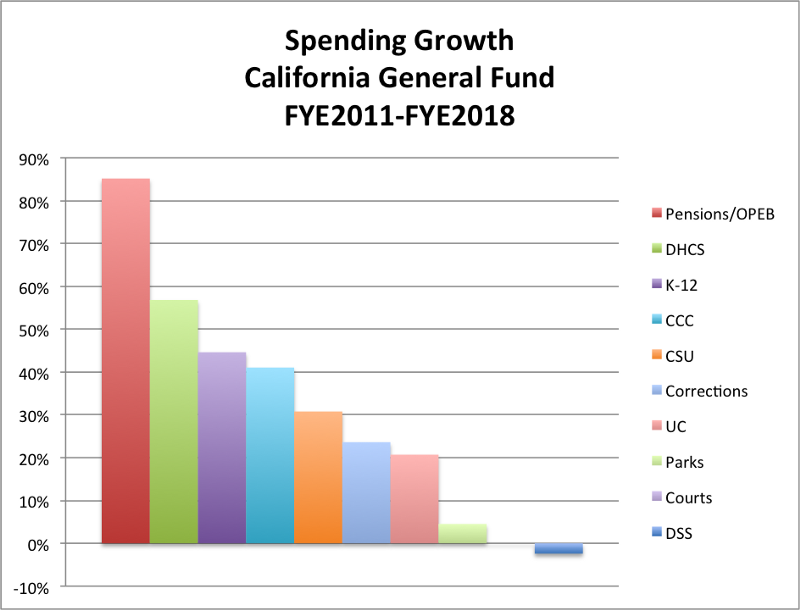Jerry Brown just proposed his sixth budget since taking office in January 2011. Boosted by a bull market and tax rate increase, General Fund revenues are budgeted to be 32% higher than the fiscal year in which Brown took office. But not all spending has kept the same pace:
 FY2010–11 Enacted Budget; FY2017–18 Governor’s Budget
FY2010–11 Enacted Budget; FY2017–18 Governor’s Budget
Spending on UC, CSU, Parks and Courts grew slower than revenues and declined at DSS (Department of Social Services) while spending on pensions, OPEB (retiree health care) and DHCS (mostly Medi-Cal) increased rapidly, as explained here and here. Corrections benefited from a reduction in inmates, offset in part by compensation boosts as explained here.
Brown has tried to control spending on pensions, OPEB and DHCS but Governors can only do so much. The Legislature is a co-equal branch of government (indeed, California’s constitution mentions the Legislature before the Executive). To discourage new spending programs, Brown has warned the Legislature that bull markets don’t last forever (UC, CSU, parks, courts and DSS lost budget share in a bull market — just imagine the consequences for them in a bear market). But Brown must ask legislators to end the erosion of public services. To do that, legislators must curtail fast-growing spending on pensions and OPEB and make Medi-Cal spending more efficient, especially in light of the state’s addition of ~$40 billion of pension and OPEB debt since Brown took office. Unless addressed, Brown will leave the state with more debt than he inherited. Like greenhouse gas emissions, the consequences fall hardest on future generations.
Stopping new spending programs is not the answer. Indeed, some new spending programs might be needed. The answer is to stop sacrificing services for citizens to fast-growing spending on pensions and OPEB and to inefficient spending at Medi-Cal. Those are tough problems to solve. If Brown is going to leave a sustainable legacy, he must ask the Legislature to address them. If not now, when?

